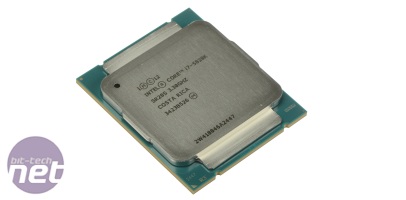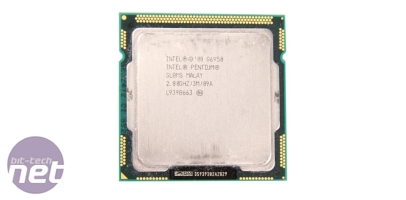Non K-edition baseclock overclocking fiasco: Is it good or bad for Intel?
December 31, 2015 | 16:24
Companies: #intel

When reports of substantial overclocks being achieved on non-K edition Intel CPUs surfaced a few weeks ago, my initial thoughts didn't immediately leap to motherboard manufacturers having found a very interesting and potentially cost-saving backdoor.
In fact, at first, I thought quite the opposite - that Intel may even have left the option there for motherboard manufacturers to find or even colluded with them months ago. The possible reasons for this? Poor Skylake sales being one of them, although, despite current high prices and initial lack of availability both of the CPUs and motherboards, I don't think sales are bad enough to warrant this - far from it.
[break]
My thinking here would be that if the over-priced K-series CPUs (when I say over-priced, I'm mainly talking about the Core i7-6700K here, which currently costs more than the Core i7-5820K for Intel's flagship X99 platform) didn't sell well at launch, or indeed in the months after it, Intel could have had a backup plan if things took a nosedive - offer a carrot on a stick to enthusiasts willing to take the risk and upgrade to LGA1151 using a non-K edition CPU.
 The Core i7-5820K actually costs less than the Core i7-6700K - one reason why uptake of Z170 systems might be hampered, but could also be helped by overclocking
The Core i7-5820K actually costs less than the Core i7-6700K - one reason why uptake of Z170 systems might be hampered, but could also be helped by overclocking
Of course, it couldn't go all out and reintroduce budget overclocking in the same way we saw years ago with the likes of the E5300 - we were lucky to get the Pentium G3258 with its more recent Devil's Canyon lineup. However, offering something slightly more niche yet still appealing to those that can't quite stretch to a Core i5-6600K doesn't, in my mind, sound like such a bad idea.
The Pentium G3258 clearly had its limitations. Its two thread limit thanks to the lack of hyper-threading hurt it in a number of benchmarks, including games on occasions, but for the casual gamer that also knew how to overclock, it represented a great deal. Here was a CPU that you could push to Intel Core i3-4130 levels in some tests and even beyond in some cases, for half the price.
Now, we don't know yet what if anything a Skylake refresh will offer by way of budget overclocking and if another unlocked Pentium is on the cards. However, I really don't think the ability to tweak the base clock and achieve a decent overclock on something like a Core i5-6400 or Core i3-6100 is going to hurt sales that much, at least from the end user point of view.
System builders will likely take advantage of it at some point as well, but for the home builder, the fact the method has come so long after the launch of Skylake means that it will take a while to become common knowledge and for the trickle of Skylake upgraders to take advantage of it. That's not to knock the potential, though - the Core i5-6400 costs £40-50 less than the Core i5-6600K, but is practically identical and seeing that most Z170 boards, at least from ASRock and MSI can now use the base clock overclocking technique after a BIOS update, you don't even need to invest in a super-expensive board either.
At this point, nearly five months after the launch of Skylake, I'd argue that K-series sales have levelled off, plus they were never going to be sky-high anyway, seeing as you're not just dealing with a new socket, but the move from DDR3 to DDR4 too. Windows 10 was launched way back in the summer as well, so there's not much else to spur-on upgrades. Introducing some fun, budget overclocking could give Skylake uptake a shot in the arm when it needs it most and without damaging sales of more expensive CPUs too much - in fact, in the long term, it could see more LGA1151 sales, as owners of older socket motherboards take the chance and upgrade.

The Intel Pentium G6950 was one of the company's last cheap CPUs that could be significantly overclocked.
This will not only mean more CPU sales for Intel, but better board and memory sales too. Of course, it could be board manufacturers that are also feeling the pinch of poor sales in the wake of high upgrade costs with Skylake - there are some great boards out there but apart from next-gen storage there's little else to tempt users away from their trusty Sandy Bridge, Ivy Bridge or Haswell-based systems.
Of course, coming now means Intel has the ability to exercise some damage control too. It could quite easily introduce a microcode to future CPUs to prevent the technique, just like it has done in the past if it starts to lose cash. Likewise, many people will be looking ahead at future CPUs due in 2016 for LGA1151, where it could again prevent the technique, albeit letting it run for most of 2016 with the current CPU lineup.
This is pure speculation, of course, but I suspect the issue is far from black and white. On one hand, only users willing and able to take the risk and keen to save some cash will go out and buy a £140 Core i5-6400 instead of a K-series CPU, while those buying a Core i3 or Pentium and overclocking it will likely have done so anyway as they couldn't afford to spend more - the performance boost would be a bonus - something that could galvanise more interest in the budget PC enthusiast scene rather than something that's purely eating into Intel's finances.
In fact, at first, I thought quite the opposite - that Intel may even have left the option there for motherboard manufacturers to find or even colluded with them months ago. The possible reasons for this? Poor Skylake sales being one of them, although, despite current high prices and initial lack of availability both of the CPUs and motherboards, I don't think sales are bad enough to warrant this - far from it.
[break]
My thinking here would be that if the over-priced K-series CPUs (when I say over-priced, I'm mainly talking about the Core i7-6700K here, which currently costs more than the Core i7-5820K for Intel's flagship X99 platform) didn't sell well at launch, or indeed in the months after it, Intel could have had a backup plan if things took a nosedive - offer a carrot on a stick to enthusiasts willing to take the risk and upgrade to LGA1151 using a non-K edition CPU.

Of course, it couldn't go all out and reintroduce budget overclocking in the same way we saw years ago with the likes of the E5300 - we were lucky to get the Pentium G3258 with its more recent Devil's Canyon lineup. However, offering something slightly more niche yet still appealing to those that can't quite stretch to a Core i5-6600K doesn't, in my mind, sound like such a bad idea.
The Pentium G3258 clearly had its limitations. Its two thread limit thanks to the lack of hyper-threading hurt it in a number of benchmarks, including games on occasions, but for the casual gamer that also knew how to overclock, it represented a great deal. Here was a CPU that you could push to Intel Core i3-4130 levels in some tests and even beyond in some cases, for half the price.
Now, we don't know yet what if anything a Skylake refresh will offer by way of budget overclocking and if another unlocked Pentium is on the cards. However, I really don't think the ability to tweak the base clock and achieve a decent overclock on something like a Core i5-6400 or Core i3-6100 is going to hurt sales that much, at least from the end user point of view.
System builders will likely take advantage of it at some point as well, but for the home builder, the fact the method has come so long after the launch of Skylake means that it will take a while to become common knowledge and for the trickle of Skylake upgraders to take advantage of it. That's not to knock the potential, though - the Core i5-6400 costs £40-50 less than the Core i5-6600K, but is practically identical and seeing that most Z170 boards, at least from ASRock and MSI can now use the base clock overclocking technique after a BIOS update, you don't even need to invest in a super-expensive board either.
At this point, nearly five months after the launch of Skylake, I'd argue that K-series sales have levelled off, plus they were never going to be sky-high anyway, seeing as you're not just dealing with a new socket, but the move from DDR3 to DDR4 too. Windows 10 was launched way back in the summer as well, so there's not much else to spur-on upgrades. Introducing some fun, budget overclocking could give Skylake uptake a shot in the arm when it needs it most and without damaging sales of more expensive CPUs too much - in fact, in the long term, it could see more LGA1151 sales, as owners of older socket motherboards take the chance and upgrade.

This will not only mean more CPU sales for Intel, but better board and memory sales too. Of course, it could be board manufacturers that are also feeling the pinch of poor sales in the wake of high upgrade costs with Skylake - there are some great boards out there but apart from next-gen storage there's little else to tempt users away from their trusty Sandy Bridge, Ivy Bridge or Haswell-based systems.
Of course, coming now means Intel has the ability to exercise some damage control too. It could quite easily introduce a microcode to future CPUs to prevent the technique, just like it has done in the past if it starts to lose cash. Likewise, many people will be looking ahead at future CPUs due in 2016 for LGA1151, where it could again prevent the technique, albeit letting it run for most of 2016 with the current CPU lineup.
This is pure speculation, of course, but I suspect the issue is far from black and white. On one hand, only users willing and able to take the risk and keen to save some cash will go out and buy a £140 Core i5-6400 instead of a K-series CPU, while those buying a Core i3 or Pentium and overclocking it will likely have done so anyway as they couldn't afford to spend more - the performance boost would be a bonus - something that could galvanise more interest in the budget PC enthusiast scene rather than something that's purely eating into Intel's finances.

MSI MPG Velox 100R Chassis Review
October 14 2021 | 15:04






Want to comment? Please log in.